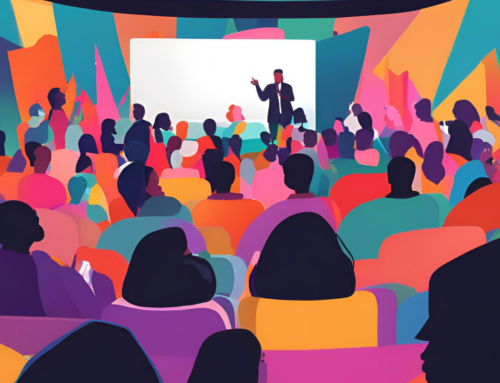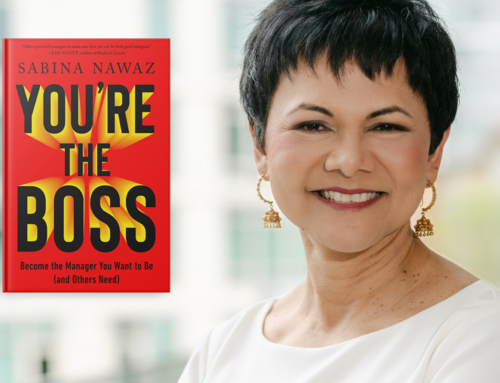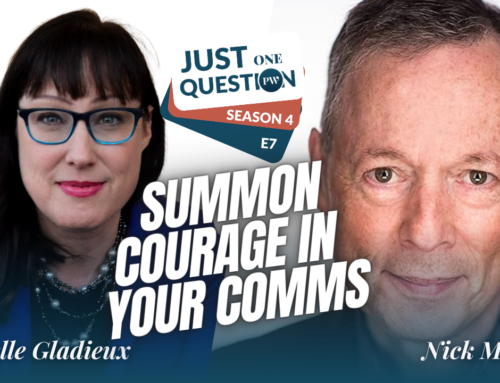OK, I’m not even going to comment on how it’s possible that it has been 20 years since 9/11. The anniversary crept up on me while I was busy doing other things, like riding out a pandemic. How about you? If you were alive and old enough on 9/11, you remember where you were the moment you learned the news, and you always will. You’ll never forget the sight of that second plane ramming into the tower, changing forever your sense of safety and the vulnerability of New York City.
I’ve been running a communications consulting company just a few years longer than two decades, so it seems like a good time to take stock and ask, ‘how has communications changed in the last 20 years?’ 9/11 itself didn’t affect communications much in any deep way, after it added terrorism to the general public’s list of things to worry about, giving us new words in our lexicon, such as “War on Terror,” “Guantanamo,” and “Osama Bin Laden.” But the last twenty years have affected communications profoundly; it is an utterly different world now for anyone who seeks to get the public ear. Here are five major changes – what others do you see?
Gatekeepers have given way to DIY. In 2001, it was still the case that editors, TV producers, and publishers largely determined who could have a voice in the public square. To do them credit, most of those gatekeepers truly believed that they had the judgment to be able to choose the right voices to which to hand the megaphone of publication or airtime. Today, thanks to the Internet, social media, and all the rest of it, those gatekeepers are largely irrelevant. For better or worse, now there is a more democratic winnowing process that leaves some people talking and the rest of us listening. Is it perfect, and do the most intelligent, sophisticated, or lively voices always win? Of course not. But almost everyone who is willing to do the hard work of catching the public eye or ear will get their chance. Whether they keep the public eye or ear is another matter entirely.
Authenticity and self-disclosure rule the day. In 2001, you could undertake some academic research and expect to publish it and maybe even get some attention if you did it intelligently. Your own biography was not particularly relevant. Now, the loudest microphone often goes to the person willing to share a history of abuse, or addiction, or trauma. It’s still the case that you have to reveal things artfully, and in reasonable doses, but the public space is often held open for people with a deeply dysfunctional personal story to share. We want to know what people have at stake in order to take them seriously.
Top executives must be able to communicate like champs. Before 9/11, an executive could be good at his or her job and not be expected to talk about it much. A charismatic CEO was seen as a great advantage, rather than a requirement. Now, CEOs and the C-suite in general must be effective storytellers, in part because their employees demand it, and in part because the public has come to expect it. I recently began coaching a top executive in a very large company who was told to improve his storytelling skills. Twenty years ago, no one would have expected him to have a voice. Now, thanks to millennials, matrix organizations, and social media, if he doesn’t develop a strong voice, he’s going to be toast.
Inclusivity is finally happening. This one has been a long time coming, but it is finally here. At a glacially slow pace, to be sure, we are beginning to see more women in the executive ranks, and more people of color in the thought leadership world. We’re finally beginning to let go of the idea that you must be “male, pale, and stale” to be allowed to run anything real in our culture. And America has even begun to confront its own systemic racism and sexism. The progress is painfully slow, but it is progress, and we will see a much different public world even a few years from now.
And it’s all happening so much faster now. It’s so hard for the goldfish to recognize the water it swims in, as the saying goes, that we hardly take the time to notice the increased pace of communications today. But increase it has – from the time that people are willing to wait until you respond to their text or email, to the sheer number of new ideas and publications appearing daily in an endless variety of websites, aggregators, social media, and news feeds. It’s happening so fast that I can’t even keep up with the stats about it, but I do recall something like all the world’s published data (some ridiculously large number) had doubled in the past several years. That means that everything published in human history up until, say 2018, has been doubled in the past blink of an eye.
That last trend in many ways is the most important because it affects all the others. Inclusivity gets more complicated, not less, as more and more voices are heard from. Executives struggle to keep relevant and up to speed in their own sphere let alone with the rest of the world. And just because you’ve got a great authentic story doesn’t mean that the world will slow down long enough to listen to it. There are a million other stories where you came from. It’s up to you, and the DIY rules keep changing, faster and faster, and you better know what works right now or you won’t even get a chance to have your story heard.
The world lost some of its joy on 9/11. It is a grimmer, uglier, scarier world now. These are changes that affect the tone of communications primarily. But the communications world has also changed substantively in the past two decades. What have you seen, and what do you consider the most important trends?









Nick, this is a powerful and important post–indeed, as you mention, we fish don’t know the water we are swimming in, and your calling out these trends helps us do that. The sheer pace of it all is what sticks out the most for me. I appreciate your helping us see in the rear view mirror so we can be more effective communicators for the days in front of us.
Thanks, Andrea. It takes an anniversary to make us stop and contemplate the trends that we otherwise might miss day to day.